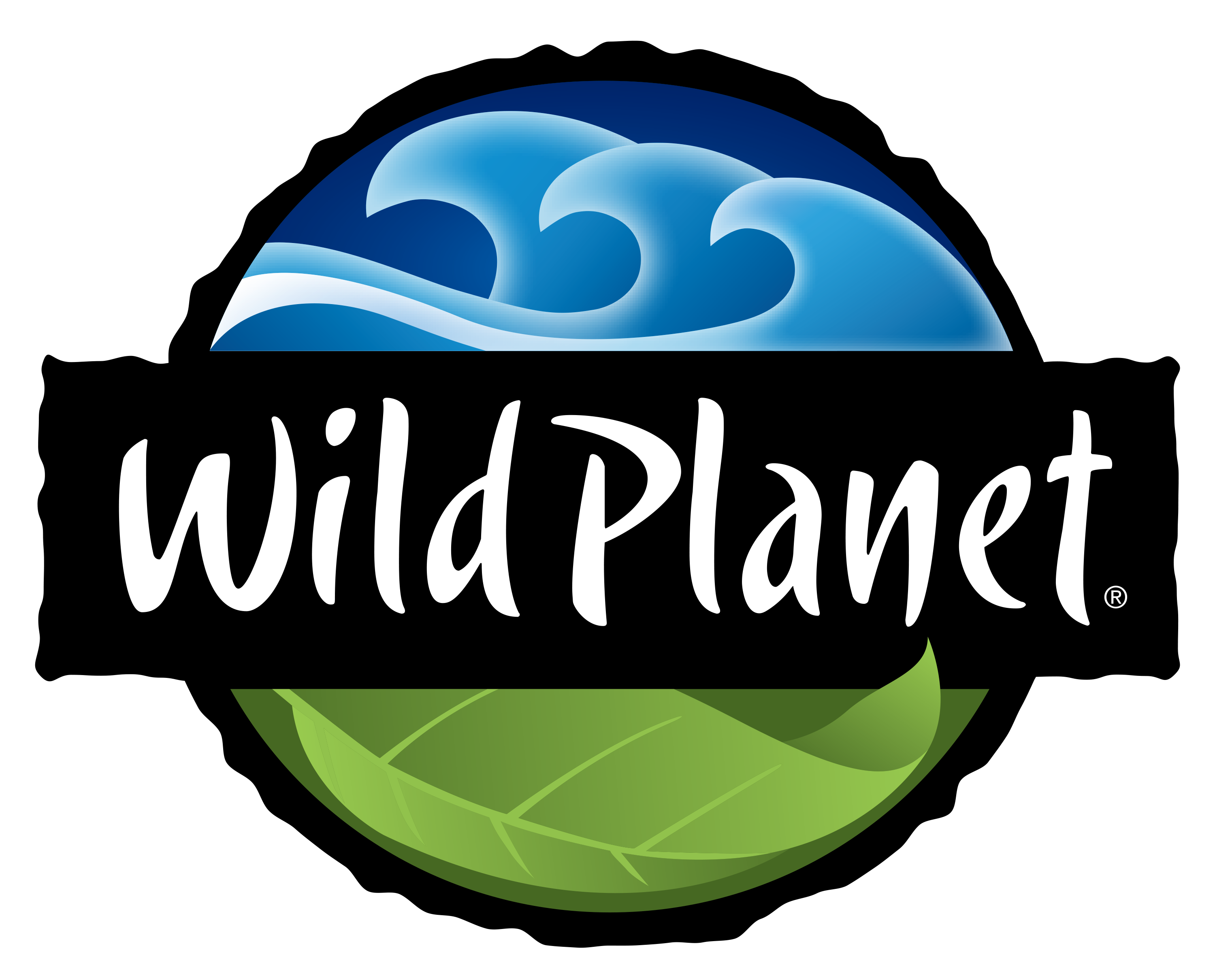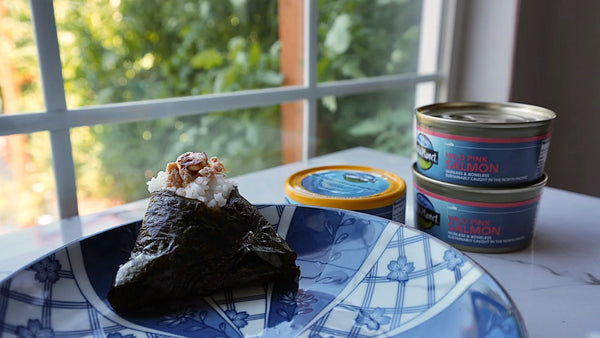Today’s blog post is a special one, as it marks the launch of our brand new “What Does It Take to Make” blog series. For years, our #WildlyCurious customers have inquired about where we process our products and what that process entails. In that time, Wild Planet’s founder, Bill Carvalho, who regularly responds to customer service emails, has had the great pleasure of conversing with fans and witnessing their interest in learning about the making of Wild Planet’s products. For quite some time, we’ve desired to share this behind-the-scenes information with all of our fans. Finally, our ‘Keeping it Wild’ blog gives us the chance to do just that! In each “What Does It Take to Make” series, Bill will provide an exclusive look into the making of Wild Planet products, starting with salmon. So, what does it take to make a can of Wild Salmon? Read below and prepare to find out! It’s going to be a wild ride!
Wild Salmon has been one of North America’s primary protein sources for thousands of years and still just may be about the best food on the planet! One of the best, and surely the most convenient, ways to enjoy wild salmon is to pop open a can. If purchased from a sustainable seafood brand like Wild Planet, the product will contain pure salmon with a little sea salt and nothing else. This provides a protein and Omega 3 combination that's difficult to find in many other foods. Not to mention, it is delicious with a rich, yet mild, flavor. This is a food that truly satisfies on every level. No wonder canned salmon is one of the fastest growing products produced by Wild Planet.
Recently, I visited our salmon cannery partners in Bristol Bay, Alaska and gained a newfound appreciation of what is required to bring us this amazing food.
ABOUT BRISTOL BAY:
Bristol Bay, Alaska, is uniquely suited for sockeye. Harvested in just a few weeks, spanning from June to mid-July, Bristol Bay produces hundreds of millions of pounds of fresh
sockeye salmon. The river systems, which are born in rugged mountainous ranges, course through level areas of tundra in which large lakes form. These areas serve as rookeries for the salmon hatchlings for their first year of life, or more. They then migrate to sea for two or three years and feast in the wild North Pacific, before returning to Bristol Bay plump and ready to advance the cycle. When they return, their bodies are packed with the nutrients, minerals and trace elements that are dissolved in the ocean and present in the wild food chain. This nutritional abundance is a blessed endowment.
HARVEST
The State of Alaska monitors the stocks and limits the harvest periods each day to ensure enough salmon is able to escape to the spawning beds in the headwaters above the lakes. This safeguarding helps sustain the resource and prevent overfishing. The rest of the salmon is allocated for the permitted fishermen to catch and bring to numerous buyers and processors. The fish are caught with small-scale gill nets. Some are deployed with drifting vessels in the bay or in the center of the wide river channels. There is another group of fishermen who do not use a large boat, but deploy their nets perpendicularly from shore, attaching it to an anchor and large buoy in the river. These hardy intrepid souls are called “set netters.” Their gill net is stationary and they work back and forth — some using a small skiff while others simply set their net at low tide and wait for the tide to float and fill the net with migrating fish. Once this happens, they work back to pick up the fish as the tide retreats.

Bill Carvalho with the Lewis Family (Walter, Ceara and Ecola)
I witnessed the Lewis family (pictured above) work their set net one cold, windy, day. These siblings began working this set net spot as children alongside their father. Decades later, they continue on. On this day, the waves were tossing them about as they grappled with the net to pull the fish. Walter, a scrappy, tall man, was pulling the fish out of the water while his sister, Ceara, held the fish tub which floats on the water. The waves were challenging them. As I watched, the two determined fishermen siblings jumped and battled with every wave to avoid being swamped. Meanwhile, the other sister, Ecola, was providing shore-side support. This sight touched me and gave me a heightened appreciation of the human effort that precedes the making of a can of salmon.

The Lewis siblings working their set net.
The Lewis family sells their fish to Alaska General Seafood (AGS), a canning partner to Wild Planet. AGS stations a flatbed 6x6 (six wheel drive vehicle) on the shore centrally located to the fishermen. The vehicle is equipped with a crane, a hanging scale and bins of ice slush to receive the fish promptly after catch. This collaborative effort between catcher and buyer is extraordinary. I am proud to be affiliated with these seafood professionals who take every measure to produce salmon of impeccable quality and freshness. At the end of the tide cycle, the 6x6 transports the total catch of numerous fishermen four or five miles back to the processing plant in Naknek.
PROCESSING 
Naknek, Alaska, is a quiet town of less than 500 inhabitants. However, in June, the population explodes to over 5,000! After all, it takes lots of workers to process hundreds of millions of pounds of salmon in three or four weeks. Where do these workers come from and what does it take to house and feed them? I had the pleasure of staying in one of the bunkhouses at Alaska General Seafoods, which has supplied Wild Planet with Sockeye salmon since 2009.
Each year, for 30 days, the company becomes a veritable city of over 600 people. I was surprised to learn that the majority of these workers return year after year to work, not dissimilar to the bears (pictured above). The young lady who picked me up from the airport in King Salmon has worked for the company for 16 years. She starting out right after high school and now, as a second-grade schoolteacher in Medford, OR (in addition to being a wife and mother of two), she still comes back every year for the sockeye salmon run. Everyone here says once it gets in your blood you become a “lifer.” The salmon cannery is the epitome of efficiency — it has to be to get through half a million pounds of salmon each day! To begin, the salmon is filleted in automatic fillet machines.
Next, each piece is skinned and sliced in machines that prepare and size each fillet to fit perfectly into the can. From there, a very sophisticated machine fills the cans to a preset tolerance and passes them over a scale that weighs and rejects any can of substandard fill. The rejected cans are passed along to workers on each side of the conveyer belt who add the necessary amount of salmon before sending them to the next step.

Workers at Alaska General Seafood’s canning salmon.
The cans are passed through the seaming machines which apply the lids and spins at mind boggling speeds, sending the cans to the retort baskets. The baskets are then placed into the retort pressure cooking chambers, cylindrical tubes (about 6 feet in diameter and about 24 feet long) the size of Titan Missiles (though I’ve never seen one of those, nor do I wish to).Out the other end of the retort chamber, the salmon emerges a fully cooked, super-food in a ready-to-eat package that renders it preserved for many years to come. It is truly a marvelous technology and highly energy efficient. There is no further need to refrigerate or hold the product in frozen conditions.

Wild Salmon in unlabeled cans.
The transporting of the finished, unlabeled cans is done by barge to Washington State or British Columbia. There, the cans await our Wild Planet label and shipping request. Once the labels are applied, the cans are cased up and off they go in full truckload quantities to one of our two warehouses in Modesto, CA and Port Elizabeth, NJ. From those warehouses, all U.S. orders are fulfilled and the cans arrive at your favorite retailers and take a ride home to your pantry awaiting their ultimate objective – serving as one of the healthiest ingredients in your diet.
Never again will I take a simple can of salmon for granted. This food is an expression of a natural world, perfectly organized to sustain life. From the eggs in the streambed, to the can in my pantry, there was collaboration and united purpose. A well-managed, wild ecosystem supplied hard working fishermen and cannery workers with a food source that is nothing short of miraculous.
I am thus gifted with a delicious food that gives me exactly what my body needs for
health, wellbeing and life. This visit to Alaska evokes in me a
Haiku moment: FLAWLESS BIOTA COMMUNITY HARDWORKING FOOD AND LIFE FOR ALL Has all of this talk about salmon left you craving a can?
View tasty salmon recipes for some tasty, salmon recipes provided by yours truly! P.S. Our Salmon and Veggie Frittata recipe is a must-try!














